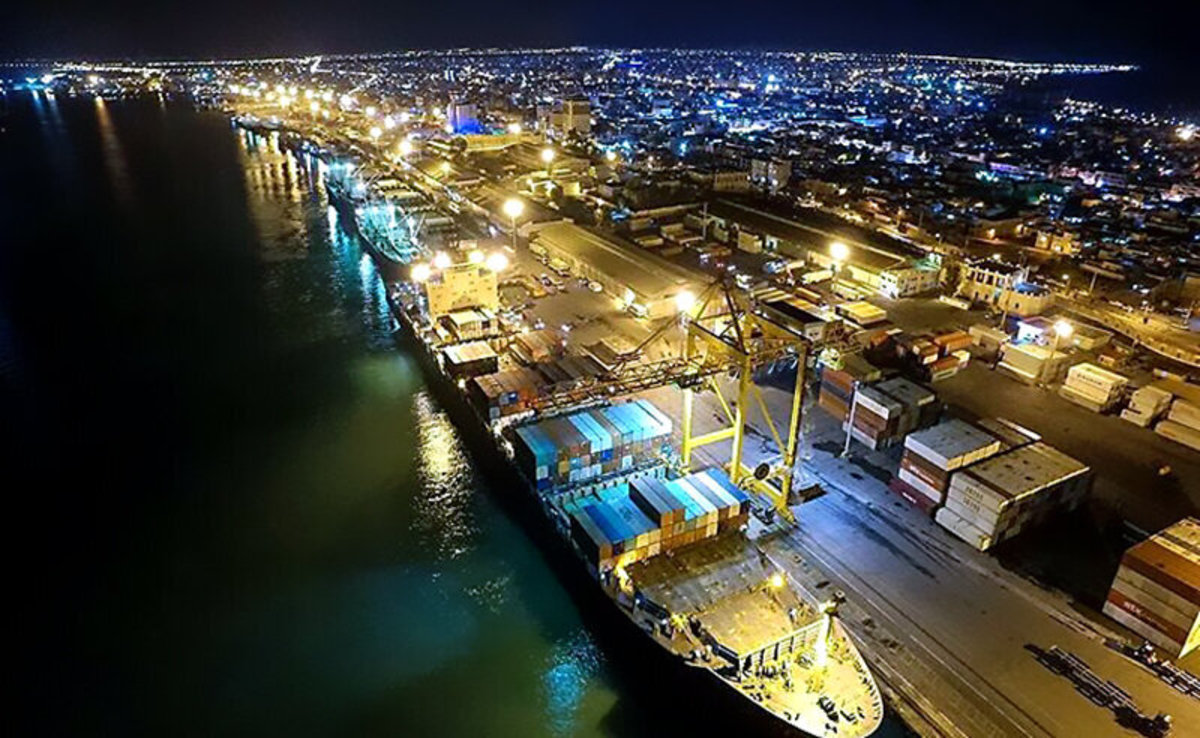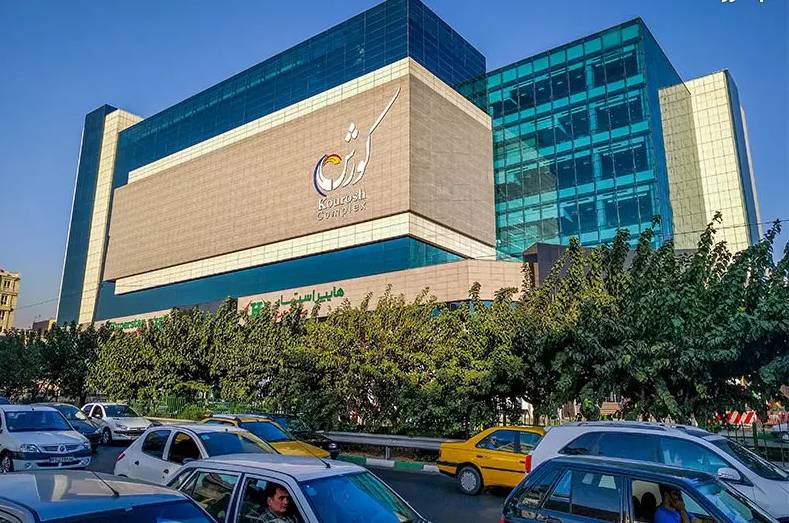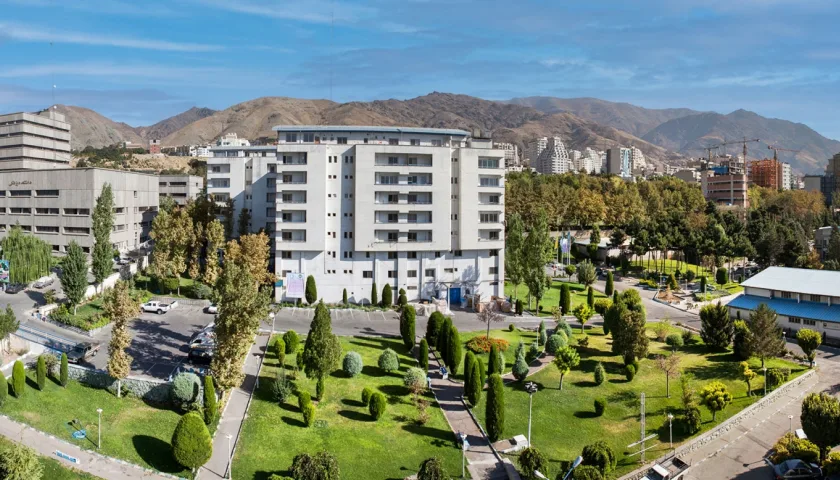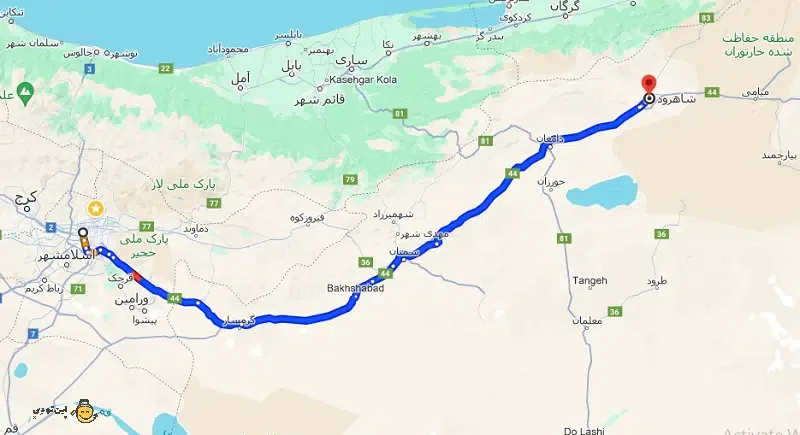The important ports of Bushehr and Hormozgan | Bushehr Port & Hormozgan Port
Ports play a crucial role in the economic development of border regions. Equipped with modern facilities and infrastructure, these ports can significantly contribute to a country’s production and overall growth. This is particularly evident in the cases of the ports of Bushehr and Hormozgan in Iran. Some hotels in Bushehr are even located near these important ports to provide convenient access for travelers.
Ports serve as key drivers of both domestic and international trade. As countries embrace globalization and distances shrink, the ports of Bushehr and Hormozgan play a prominent role in driving economic growth for both the country and the region.
Port networking is a relatively new concept that has gained significant traction in recent years among leading maritime transport nations. In this concept, small and large ports interact within a larger network. This article delves into the key ports of Bushehr and Hormozgan.
Important Ports of Bushehr Province
Bushehr Province, with an area of approximately 27,653 square kilometers, has a population of less than one million people. The province borders Khuzestan Province and part of Kohgiluyeh and Boyer-Ahmad Province to the north, the Persian Gulf and part of Hormozgan Province to the south, Fars Province to the east, and the Persian Gulf to the west.
Bushehr Province has over 600 kilometers of coastline on the Persian Gulf and is of high strategic and economic importance. The province has 9 counties: Bushehr, Ganaveh, Tangestan, Kangān, Dashti, Dashti, Jam, Deyr, and Deylam.
The commercial ports of Bushehr Province include the ports of Bushehr, Deylam, Ganaveh, Rig, Marvarid Khark Island, Mohammad Amari, Abualkheir Amari, Deyr, Kangān, Nakhl Taki, and Asaluyeh. Various types of piers in the important ports of Bushehr operate as commercial, fishing, oil, and industrial ports under the supervision of the General Department of Ports and Maritime Organization of Bushehr Province.
One of the best recreational activities in Bushehr port is to wander around the beautiful beaches and piers of this city. Jafareh Pier is located in the northwestern part of Bushehr port. At this pier, you can buy fresh fish from fishermen who have brought their fresh catch to the shore and watch the turquoise waters of the Persian Gulf. Pasargad Bushehr Aparthotel is located near this pier and guests can easily visit this beautiful pier.
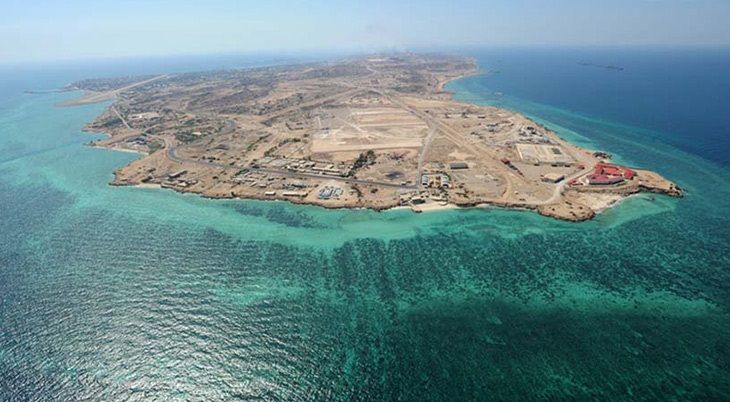
1.Bandar Ganaveh: A Thriving Port City on the Persian Gulf
Bandar Ganaveh, a bustling port city nestled on the Persian Gulf coast, stands as one of Bushehr’s most significant ports and the province’s third-most populous city. Renowned for its traditional dhows, this ancient port boasts a rich maritime heritage, positioning itself as one of the nation’s largest ports. With a fleet of over 1,050 traditional vessels, Bandar Ganaveh’s commercial sector reigns supreme, solidifying its status as a key player in Iran’s maritime landscape.
Beyond its commercial prowess, Bandar Ganaveh thrives as a multipurpose port, catering to both cargo and passenger traffic. The port’s passenger operations facilitate seamless travel between Bandar Ganaveh and Bandar Khark, fostering connectivity within the region.
The port’s operations permeate the very fabric of Bandar Ganaveh, ensuring the city’s well-being. The port serves as a vital lifeline, meeting the community’s needs and functioning as an interconnected supply chain. Fishing remains the cornerstone of life for Bandar Ganaveh’s inhabitants, with vessels swiftly unloaded within 24 hours.
Recognizing the port’s immense potential, the Ports and Maritime Organization has embarked on an ambitious expansion plan. This grand vision encompasses the development of a new 54-hectare port complex, equipped with four jetties capable of accommodating vessels with a capacity of 5,000 tons.
Bandar Ganaveh’s commercial port has long been a hub of trade and commerce. Today, the port witnesses a resurgence of metal vessels, alongside the traditional wooden dhows or lunj, reinvigorating commercial activities. This thriving port offers a multitude of advantages to both vessel owners and cargo proprietors, including substantial tariff reductions.
Three passenger ferries operate within Bandar Ganaveh, diligently shuttling between Bandar Ganaveh and Bandar Khark. These ferries operate throughout the day, catering to passenger demand with an average influx of 500 to 550 passengers per day.
Key Points:
Bandar Ganaveh stands as a prominent port city in Bushehr, renowned for its rich maritime heritage and traditional dhows.
The port serves as a multipurpose hub, facilitating both commercial cargo and passenger traffic.
Fishing remains the backbone of the city’s economy, with vessels swiftly unloaded within 24 hours.
An ambitious port expansion plan is underway, encompassing a new 54-hectare port complex with enhanced capacity.
The port offers significant advantages to vessel owners and cargo proprietors, including substantial tariff reductions.
Three passenger ferries connect Bandar Ganaveh and Bandar Khark, ensuring seamless connectivity.
2.Khark Island: A Strategic Hub in the Persian Gulf
Khark Island, nestled amidst the turquoise waters of the Persian Gulf, stands as one of the region’s most significant islands. Despite its modest size, Khark Island holds immense importance in terms of commerce, economy, military, and history. This strategic island lies approximately 54 kilometers from Bushehr port and 37 kilometers from Ganaveh port, encompassing an area of around 22 square kilometers. Khark Island also boasts a prominent port, aptly named Khark Port.
Khark Port’s services encompass two primary sectors: vessel entry and exit services. The port’s most crucial function lies in providing search and rescue services at sea, alongside facilitating passenger ferry operations. Notably, 90% of Iran’s crude oil exports are channeled through Khark Port.
The largest tankers navigating the Persian Gulf have the privilege of docking and unloading their cargo at Khark Port. The port is equipped with a diverse range of harbors and piers, including the Pearl Port, which falls under the ownership of the Bushehr Ports and Maritime Organization. This harbor boasts the capacity to accommodate vessels with a gross tonnage of 1,000 tons.
Key Points:
Khark Island holds immense strategic importance, serving as a commercial, economic, military, and historical hub in the Persian Gulf.
Khark Port plays a pivotal role in Iran’s oil industry, handling 90% of the nation’s crude oil exports.
The port provides essential search and rescue services at sea and facilitates passenger ferry operations.
Khark Port welcomes the largest tankers navigating the Persian Gulf, offering a range of harbors and piers, including the Pearl Port.
Note: This is just a translation of the provided text. If you would like any additional information or modifications, please let me know.
3.Kangān Port: A Gateway to Tourism and Maritime Commerce
Nestled along the scenic coastline of Bushehr Province, Kangān County emerges as a captivating destination brimming with natural beauty and alluring sandy and rocky beaches. Kangān Multipurpose Port stands as one of Bushehr’s most significant ports, encompassing an area of 15 hectares and facilitating trade, fishing, and recreational activities with neighboring Gulf countries.
The port boasts a fleet of 115 traditional commercial vessels and over 250 fishing and recreational boats operating within its basin. Kangān Port’s favorable depth presents immense opportunities for development. By relocating fishing vessels to a designated area, the existing basin could be transformed into a hub of enhanced potential. To elevate the port’s standing, the inclusion of metal vessels could further expand its capabilities.
Key Points:
Kangān County is a tourism hotspot in Bushehr Province, renowned for its captivating natural beauty and diverse beaches.
Kangān Multipurpose Port serves as a vital gateway for trade, fishing, and recreational activities in the region.
The port’s favorable depth presents opportunities for expansion and development.
Relocating fishing vessels and incorporating metal vessels could further enhance the port’s potential.
4.Deyr Port: A Thriving Commercial Hub Bridging Iran and Qatar
Deyr Port, nestled along the southern coastline of Bushehr Province, stands as one of the region’s most significant commercial ports. With a strategic location just 208 kilometers from Bushehr Port and boasting the title of the nearest port to Qatar, Deyr Port plays a pivotal role in facilitating trade and maritime operations.
Home to a bustling fleet of 180 active cargo motor dhows, Deyr Port serves as a vital hub for commercial activities. Recognizing its proximity to the Moothaf region, the port has placed a strong emphasis on search and rescue operations at sea, ensuring the safety of mariners in the area.
Substantial investments have been channeled into developing a new port in Deyr, effectively separating the fishing port from the commercial port. This strategic move has opened up a world of possibilities for Deyr Port, positioning it as a prime gateway for exporting goods to neighboring Qatar.
Annually, Deyr Port witnesses the efficient handling of over 64,000 tons of cargo destined for export to Qatar. The port’s dredging project, initiated in 2016, has successfully achieved a negative draft of 4 meters, enabling it to accommodate vessels with a draft of up to 5.4 meters.
Key Points:
Deyr Port stands as a vital commercial hub in Bushehr Province, facilitating trade with neighboring Qatar.
The port’s proximity to Qatar has fueled its growth and significance in the region.
Deyr Port’s strategic location has made it a hub for search and rescue operations at sea.
Substantial investments have paved the way for the development of a new and enhanced port facility.
The port’s dredging project has expanded its capacity to accommodate larger vessels.
Major Ports of Hormozgan Province: Gateways to Maritime Trade and Economic Prosperity
Blessed with an extensive 2,237 kilometers of coastline, 14 islands, and 71 major and minor ports along the Persian Gulf and the Sea of Oman, Hormozgan Province stands as Iran’s most prominent coastal and maritime hub. Recognizing its strategic significance, the development of Hormozgan’s ports, including the important ports of Bushehr, is of paramount importance.
Out of the 71 ports in Hormozgan Province, 32 are operational, playing a pivotal role in the nation’s economy, particularly in facilitating exports and imports. Iran’s active presence in global markets, enabled by the exchange of goods with Central Asian countries, further underscores the importance of these ports as a strategic asset.
The active ports in Hormozgan Province boast 156 berths for docking vessels. Among these, 21 are fishing ports, 15 are multipurpose ports, 11 are commercial ports, 10 are industrial ports, 7 are oil ports, 2 are passenger ports, and 5 have diversified uses.
Capitalizing on the nation’s largest maritime passenger fleet and most advanced terminals, Hormozgan Province holds a 95% share in transporting maritime passengers and their vehicles within the country. This movement is primarily facilitated through the province’s two passenger ports, particularly Shahid Haghani Port. Consequently, Hormozgan Province is widely recognized as Iran’s maritime travel hub.
The coastline of Hormozgan Province holds immense significance due to the presence of major ports such as Shahid Rajaee Port, Shahid Bahonar Port, Jask Port, Shahid Haghani Port, Bandar Kong, Bandar Sirik, Bandar Lengeh, and the ports of the islands of Qeshm, Kish, Hormuz, and others.
Key Points:
Hormozgan Province stands as Iran’s premier coastal and maritime hub, with an extensive coastline and a multitude of ports.
The province’s ports play a crucial role in the nation’s economy, facilitating exports, imports, and maritime transportation.
Hormozgan Province holds a 95% share in Iran’s maritime passenger and vehicle transportation.
The presence of major ports like Shahid Rajaee Port and Shahid Haghani Port further cements the province’s maritime significance.
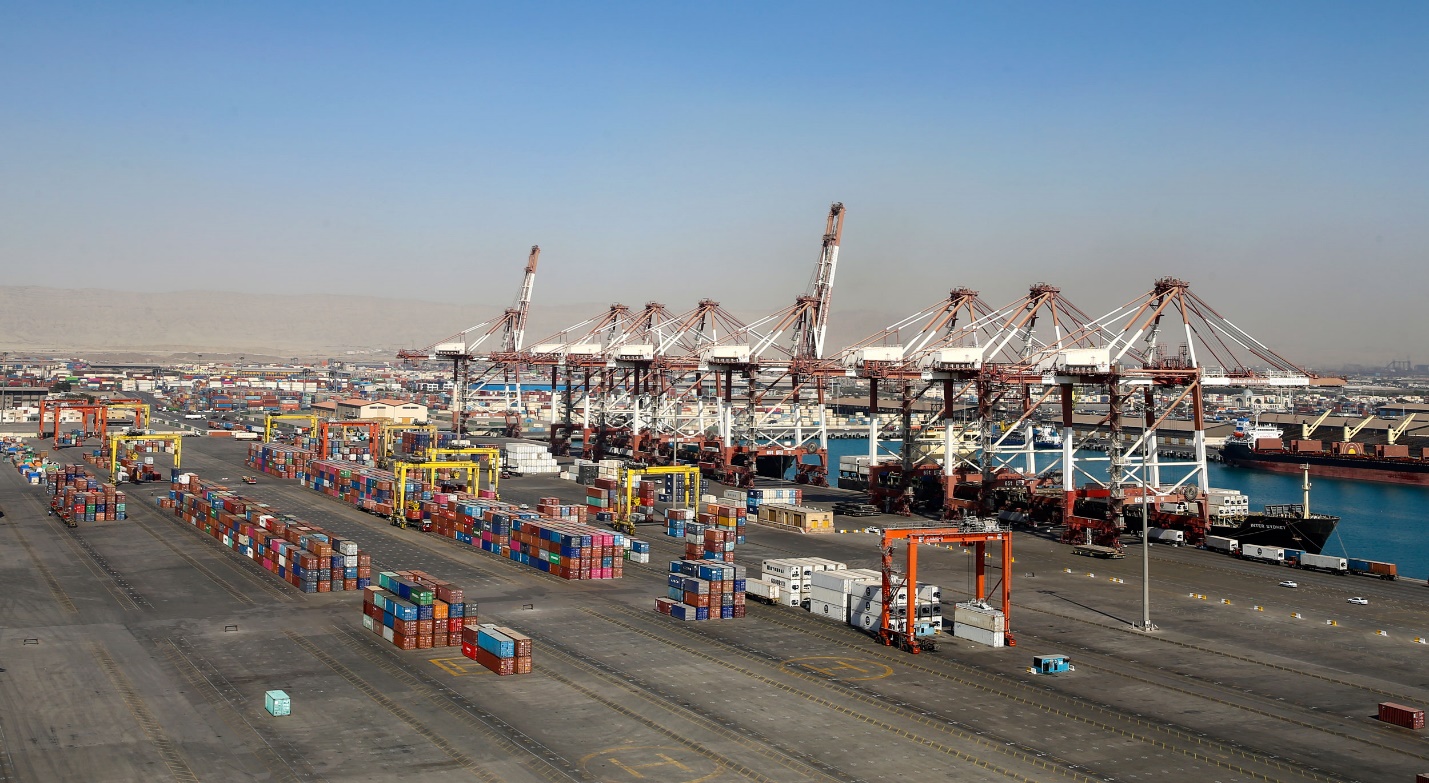
1.Shahid Rajaee Port: Iran’s Gateway to Global Trade
Shahid Rajaee Port, nestled along the southern coastline of Iran in Bandar Abbas, stands as the nation’s most prominent maritime gateway and a cornerstone of the national economy. Its strategic location, coupled with its exceptional infrastructure and connectivity, positions it as a hub of global trade and a driving force behind Iran’s economic development.
Unparalleled Geographical Advantage:
Shahid Rajaee Port boasts an unrivaled geographical position, situated at the closest point to the Strait of Hormuz, the entry point to the Persian Gulf. This strategic location places the port at the heart of global maritime trade routes, significantly reducing shipping times and costs.
Convergence of Trade Routes:
The port’s significance is further amplified by its position at the intersection of the North-South Transit Corridor, connecting the Caspian Sea to the Indian Ocean. This strategic convergence facilitates seamless trade between Europe, Asia, and Africa, positioning Shahid Rajaee Port as a pivotal node in the global trade network.
Proximity to Industrial Hubs:
Shahid Rajaee Port enjoys close proximity to major industrial centers in Hormozgan Province and other manufacturing regions of Iran. This proximity streamlines the movement of goods between production sites and the port, enhancing logistical efficiency and reducing transportation costs.
Robust Infrastructure and Connectivity:
The port is equipped with state-of-the-art infrastructure, including 40 berths capable of accommodating a wide range of vessels. Its extensive network of roads, railways, and air connections ensures seamless integration with the national transportation system, facilitating the efficient movement of goods to and from the port.
Global Trade Gateway:
Shahid Rajaee Port serves as a gateway to over 80 major ports worldwide, connected by 35 of the world’s leading container shipping lines. This extensive network facilitates the import and export of a diverse range of goods, including petroleum products, steel, dry bulk, and liquid bulk.
Capacity and Expansion:
With an annual cargo handling capacity of 100 million tons, Shahid Rajaee Port stands as Iran’s largest and most advanced container terminal. The port’s ongoing expansion plans aim to further enhance its capacity and capabilities, solidifying its position as a global maritime hub.
Shahid Rajaee Port: A Catalyst for Economic Growth:
Shahid Rajaee Port plays a pivotal role in driving Iran’s economic growth. Its efficient operations, extensive connectivity, and global reach facilitate international trade, attracting foreign investment and promoting economic diversification. As Iran seeks to expand its presence in the global marketplace, Shahid Rajaee Port is poised to play an even more significant role in the nation’s economic development.
Key Points:
Shahid Rajaee Port’s strategic location and exceptional infrastructure make it Iran’s premier maritime gateway.
The port serves as a convergence point for global trade routes, connecting Europe, Asia, and Africa.
Its proximity to industrial hubs facilitates efficient cargo movement and reduces transportation costs.
The port’s extensive connectivity ensures seamless integration with the national transportation system.
Shahid Rajaee Port connects to over 80 major ports worldwide, facilitating global trade.
With an annual cargo handling capacity of 100 million tons, the port is Iran’s largest container terminal.
Shahid Rajaee Port plays a crucial role in driving Iran’s economic growth and promoting international trade.
2.Shahid Bahonar Port: A Gateway to Trade and Tourism
Shahid Bahonar Port, nestled along the coastline of Bandar Abbas in Hormozgan Province, stands as Iran’s third-largest transit port and a cornerstone of the region’s maritime activities. Its strategic location, coupled with its modern facilities and diverse capabilities, positions it as a hub of trade, tourism, and economic development.
A Strategic Maritime Hub:
Shahid Bahonar Port’s strategic location grants it direct access to the open waters of the Persian Gulf, connecting it to global trade routes. Its proximity to international highways, the Qeshm Free Zone, neighboring islands, and other commercial ports further enhances its significance as a maritime gateway.
A Legacy of Maritime Excellence:
Established in 1955, Shahid Bahonar Port initially bore the name “Soro.” Following the Iranian Revolution, it was renamed in honor of Shahid Mohammad Bahonar, a prominent political figure. The port holds a rich history, having once served as the sole port in Bandar Abbas, welcoming a multitude of passengers and tourists.
A Gateway for Trade and Tourism:
Today, Shahid Bahonar Port plays a pivotal role in facilitating the export of non-oil goods, cargo transportation, and the movement of domestic and international passengers. Its international standard passenger terminal caters to a significant influx of international travelers and even welcomes cruise ships. Regular weekly international voyages connect the port to Sharjah via the Sunny vessel.
Sunny Vessel: A Haven of Comfort and Entertainment:
The Sunny vessel, equipped with 152 passenger cabins and 404 beds, offers a comfortable and enjoyable travel experience. Its amenities include four cafes, a cinema, a sauna, a shopping center, and a children’s play area, ensuring a memorable journey for passengers.
Opens in a new window
Shahid Bahonar Port: A Driving Force for Regional Growth:
Shahid Bahonar Port stands as a driving force for economic growth and development in the region. Its diverse operations, encompassing trade, tourism, and passenger transportation, contribute significantly to the local economy and enhance Iran’s global presence. As the port continues to modernize and expand its capabilities, it is poised to play an even more significant role in shaping the region’s maritime landscape.
Key Points:
Shahid Bahonar Port is Iran’s third-largest transit port, serving as a key maritime hub.
Its strategic location and modern facilities facilitate trade, tourism, and passenger transportation.
The port’s international passenger terminal welcomes a significant influx of travelers.
Regular international voyages connect Shahid Bahonar Port to Sharjah via the Sunny vessel.
The port plays a crucial role in driving economic growth and development in the region.
3.Shahid Haghani Port: A Gateway to Enchanting Islands
Shahid Haghani Port, established in 1939, stands as the oldest port in Bandar Abbas and the nation’s most prominent passenger terminal. Renowned for its modern facilities and efficient operations, the port serves as a gateway to the captivating islands of Qeshm, Hengam, and Hormuz, offering travelers an unforgettable maritime experience.
A Legacy of Maritime Excellence:
Shahid Haghani Port holds a rich history, having once served as the primary port in Bandar Abbas. Today, it remains a vital hub for passenger transportation, catering to a multitude of travelers seeking to explore the nearby islands.
Island Escapes Made Easy:
The port boasts a diverse fleet of vessels, including high-speed catamarans and ferries, ensuring swift and comfortable journeys to Qeshm, Hengam, and Hormuz. These islands, each with its unique charm and attractions, offer visitors a wealth of experiences, from exploring historical sites to indulging in natural wonders.
A Journey in Itself:
The journey itself becomes an adventure as passengers embark on a scenic voyage across the turquoise waters of the Persian Gulf. The refreshing sea breeze, the panoramic views of the coastline, and the anticipation of reaching the islands create a sense of excitement and anticipation.
Modern Amenities for a Comfortable Experience:
Shahid Haghani Port is committed to providing a seamless and enjoyable experience for its passengers. The port’s well-equipped facilities include restaurants, cafes, fast-food outlets, luggage handling services, restrooms, prayer rooms, green spaces, shaded areas, parking, supermarkets, souvenir markets, transit halls, movie theaters, children’s play areas, and dedicated departure lounges for each destination.
Key Points:
Shahid Haghani Port is the oldest port in Bandar Abbas and Iran’s premier passenger terminal.
The port offers swift and comfortable ferry services to Qeshm, Hengam, and Hormuz.
The scenic ferry ride provides an unforgettable travel experience.
The port is equipped with modern amenities to ensure a comfortable journey.

